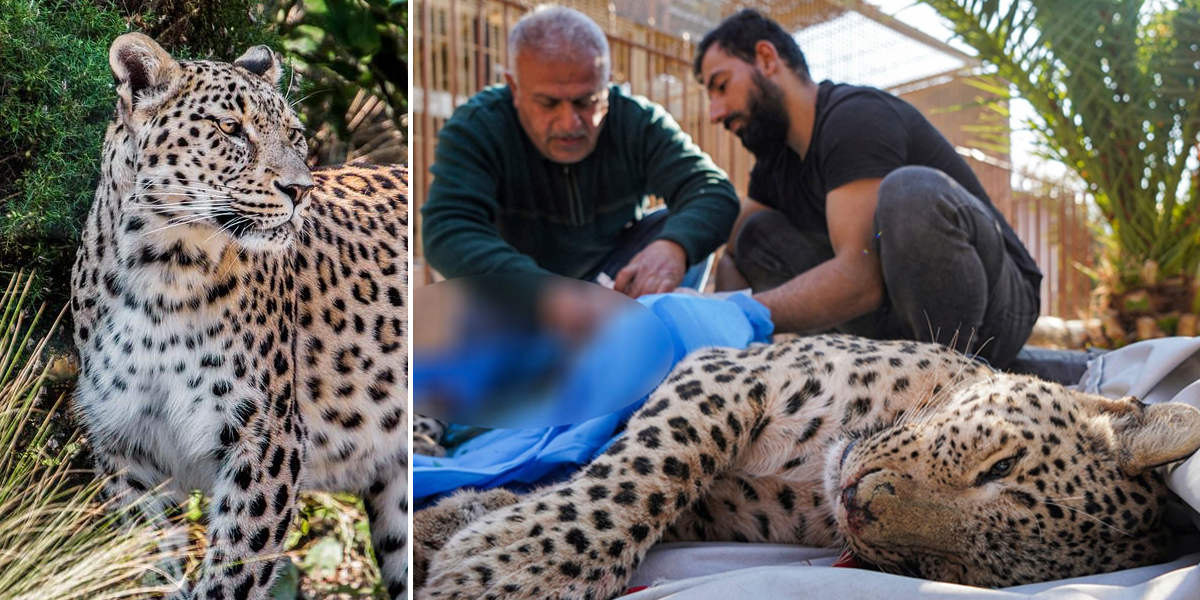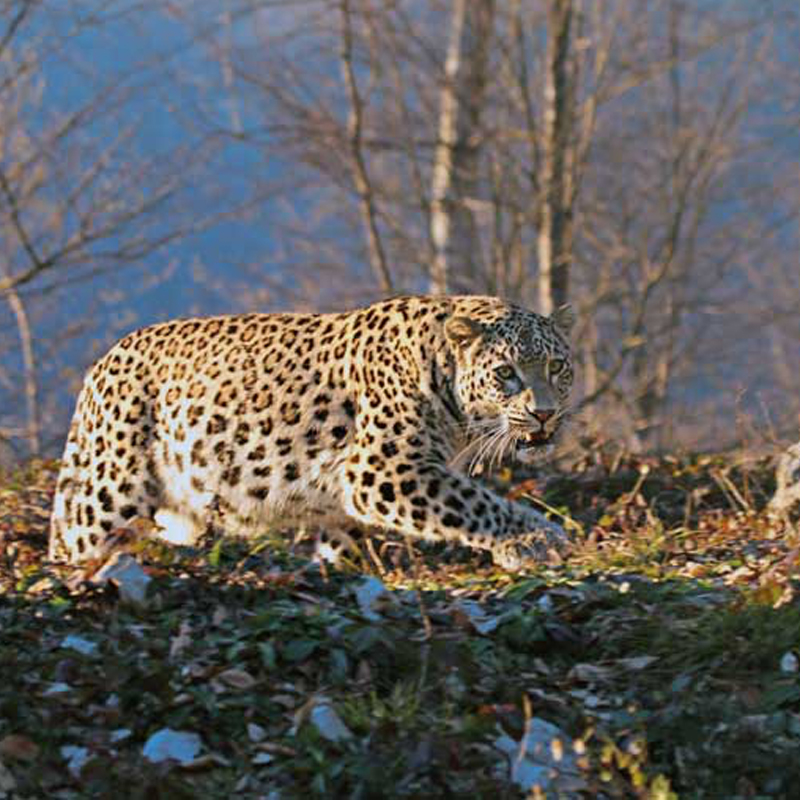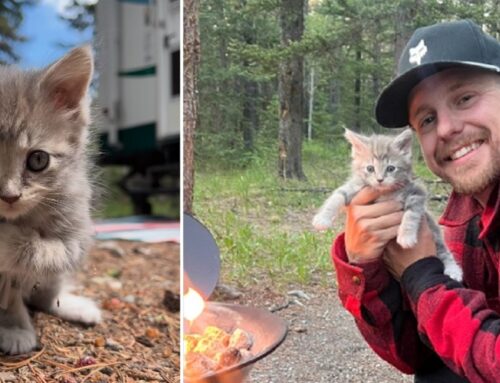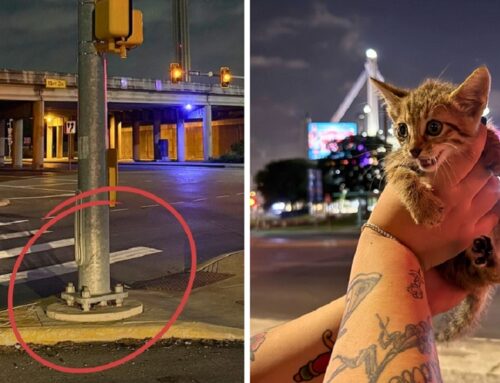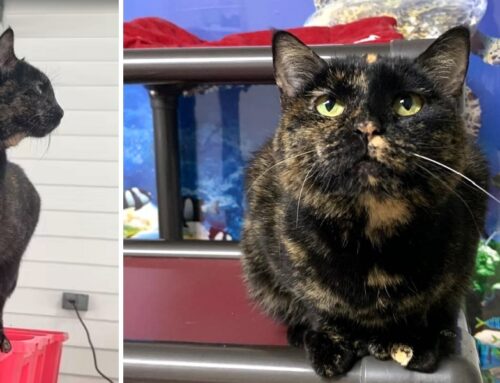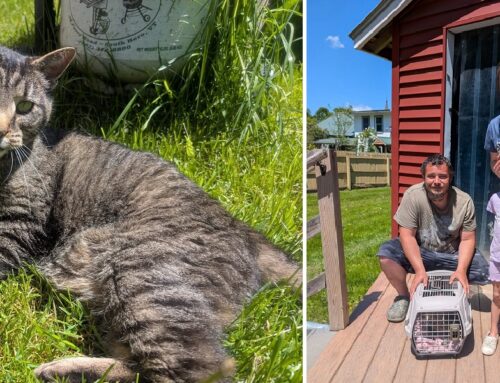In a harrowing video, we see a terrified Persian leopard, perhaps one of the rarest animals in the world, running, and tumbling down a hill while dogs bark. Finally, the frightened cat winds up at the bottom of a ravine, snarling and hissing in defense.
While this may sound cruel, several brave men are actually trying to save the big cat’s life. The cat had become caught in a snare and although it managed to free itself, one of its hind legs was severely injured. There was, in fact, a very good reason for rescuing this beautiful leopard.
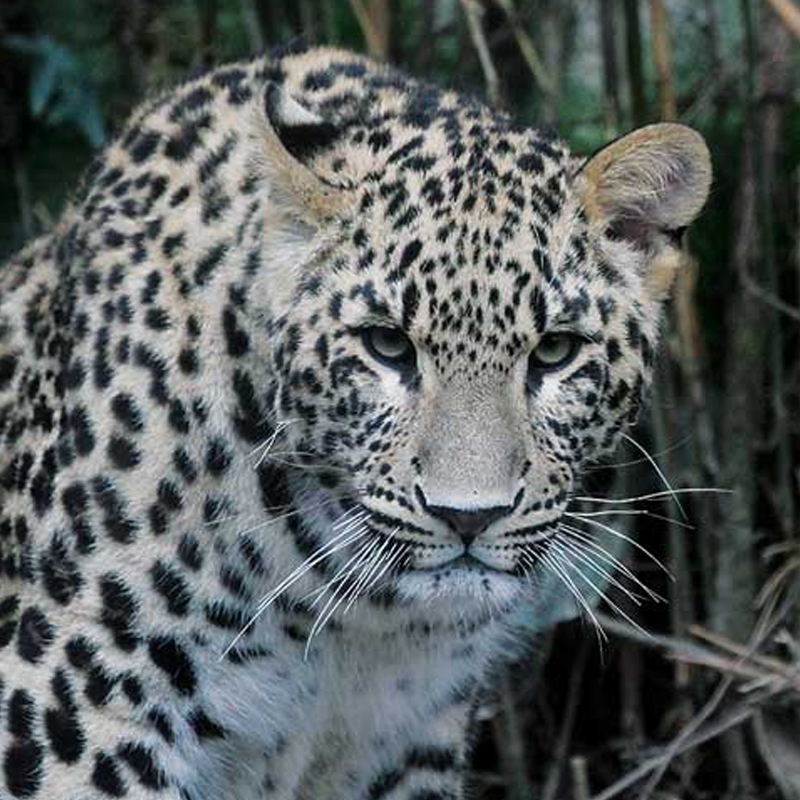
Persian Leopard via Amuraworld
The Persian leopard (Panthera pardus saxicolor) is the largest leopard subspecies. Also called the Caucasian leopard, most of the wild population lives in the forests of Iran. It is also found in Afghanistan, Turkmenistan, Armenia, Azerbaijan, Russia, Pakistan, and Turkey, The Zoo Scientist reports. This gorgeous big cat is considered endangered by the IUCN because estimates show there are less than 1000 of them in the wild.
Because The Persian Leopard Is So Rare, Saving This One Was Crucial
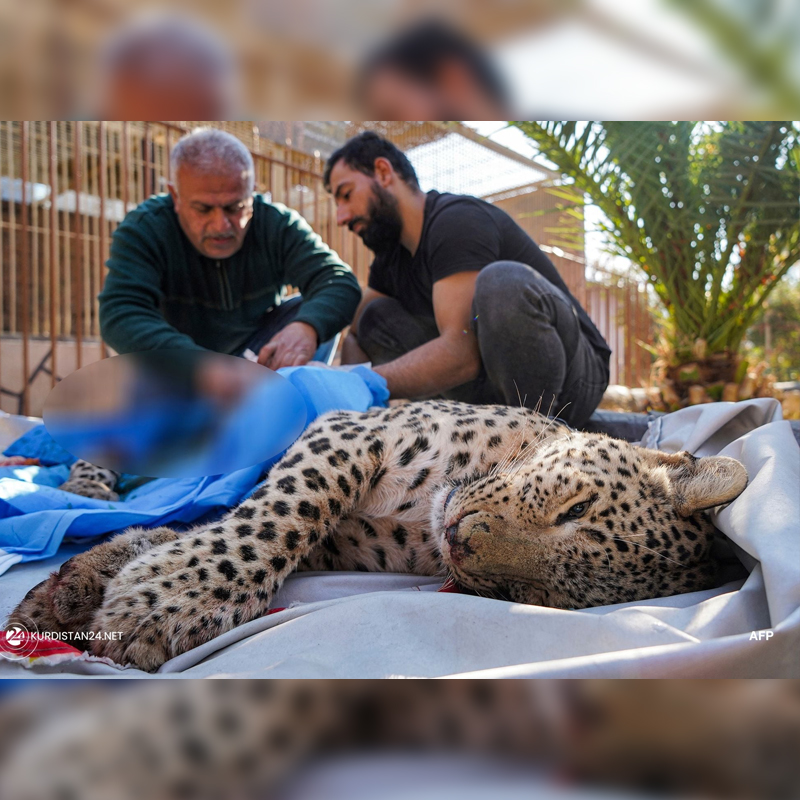
Leopard via Facebook/ Kurdistan24
Rescued in Iraq’s autonomous Kurdistan region near the border with Turkey, and apparently, according to Colonel Jamaal Saado, the leopard injured two people. Saado is the head of the environmental police in Dohuk Province, DailyTribune reports.
Villagers living near the town of Zakho lost about 20 sheep and began to realize a leopard was attacking their flocks, Saado said.
But the poor cat had a terrible wound on a back leg after being caught in a shepherd’s trap. Even so, it was able to escape. Villagers, probably not eager to lose more sheep, helped police track the animal down.
The Rescue Begins
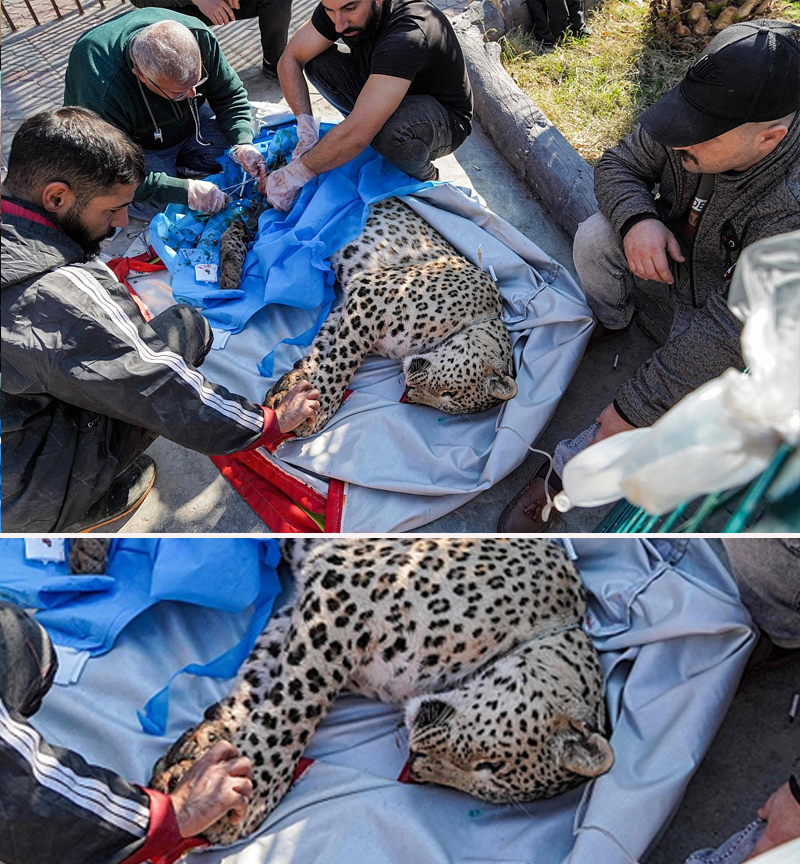
Image via Facebook/CGTN Arabic
The group of men involved included a local veterinarian and Kurdish Peshmerga forces. The dogs accompanied them to help locate the leopard, Yahoo! News reports. When found the animal was given an anesthetic. Then it was taken to the Duhok Zoo, where veterinarian Soleiman Tamr performed an amputation on the poor leopard’s hind leg.
“We will monitor it for a long time,” he says.
Tamr, who also heads a local animal protection society says the leopard weighs about 90 to 100 Kilograms (200-220 pounds).
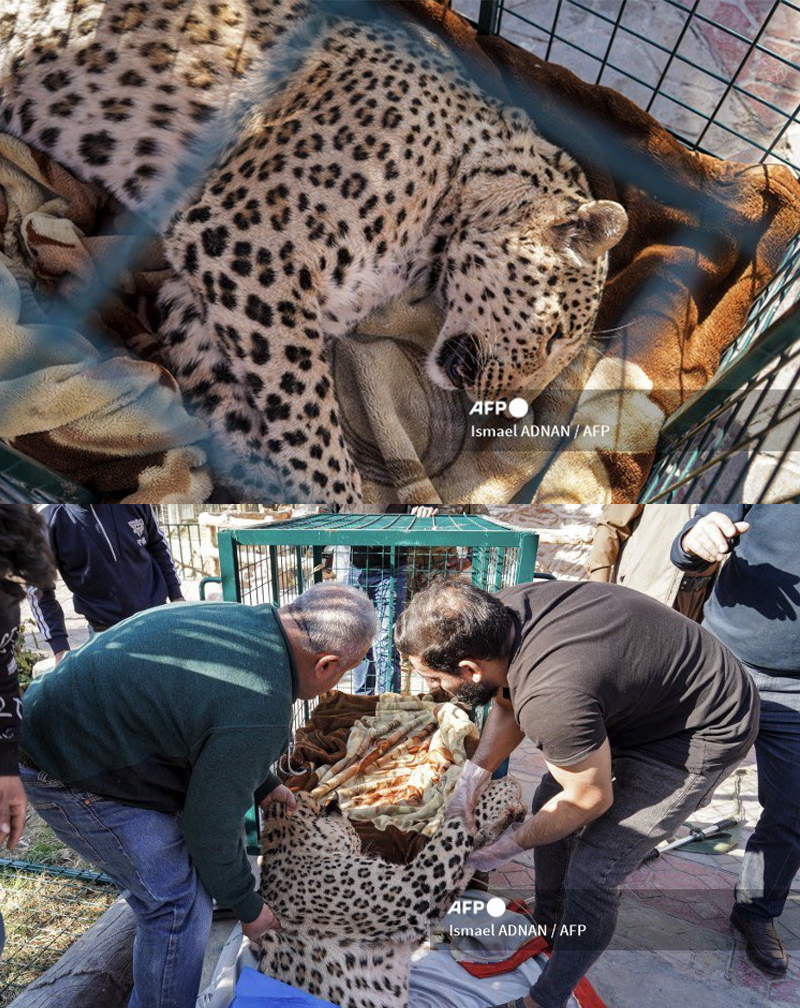
Images via Twitter/Ismael Adnan
Sadly, for this beautiful species, cases like the one above happen from time to time.
“We had two or three similar cases in Arbil Province,” some years ago, Saado said. In at least one case another Persian leopard was found dead near a village in Dohuk Province.

Image via Amuraworld
The Persian Leopard
There are eight subspecies of leopards worldwide and the Persian leopard is powerful and stocky. Like all leopards, it spends most of its life in trees. This cat’s gorgeous coat ranges from pale yellow to deep gold and of course, features the species’ characteristic black rosettes. That long black-white-tail helps the cat maintain its balance.
And the cat shifts its dietary needs from region to region. In Iran, Armenia, and Turkmenistan, it feeds on bezoar goats, wild boar, and wild sheep. But like all big cats, they aren’t above feeding on livestock, and that’s what gets them in trouble. Humans do not take kindly to this.
Below, we have included two videos, the first of which shows the leopard recuperating in a cage at the zoo. The second shows the amazing, but harrowing capture of this poor cat.
Video by Reuters:
“Authorities at this Iraqi zoo are taking care of a Persian leopard rescued from the mountains.”
We hope the cat continues to receive the care it needs in a safe place where it will have trees to climb and room to roam. Kudos to the people who rescued it. Hopefully, this rare and extraordinary big cat will have the chance to lead a good life.
The video below via Facebook/Kurdistan Organization for Animal Rights Protection:
Update on the Leopard Named Plinga Batifa
According to a later update by The Guardian, an international team of specialists treated the leopard’s injured leg. Unfortunately, they needed to amputate its leg just below the hip joint.
“Dubbed Plinga Batifa (Batifa leopard), the 65kg (10 stone) male is about five or six years old; its expected lifespan is 10-15 years. The animal is recovering well from the surgeries, but can never return to the wild. Missing a hind leg and having lost three of its canine teeth, possibly while being captured, it cannot jump or hunt,” they write.
Following the traumatic event, experts hoped to transfer Plinga from a Kurdistan Zoo to a rehabilitation center where he could have a suitable life of privacy. In the wild, these big cats are “very solitary aninmals” who rarely see other cats but once a year when they mate.
With only about 1000 left in the wild, losing just one cat puts the entire population at risk.
Recently, we shared a story about Amur leopards, considered among the rarest in the world, which are hanging on in nature preserves in Far Eastern Russia. It’s clear we need more protected areas worldwide for big cats and wildlife in general. These spectacular animals make our world so much richer and deserve a place to roam free in the wild.
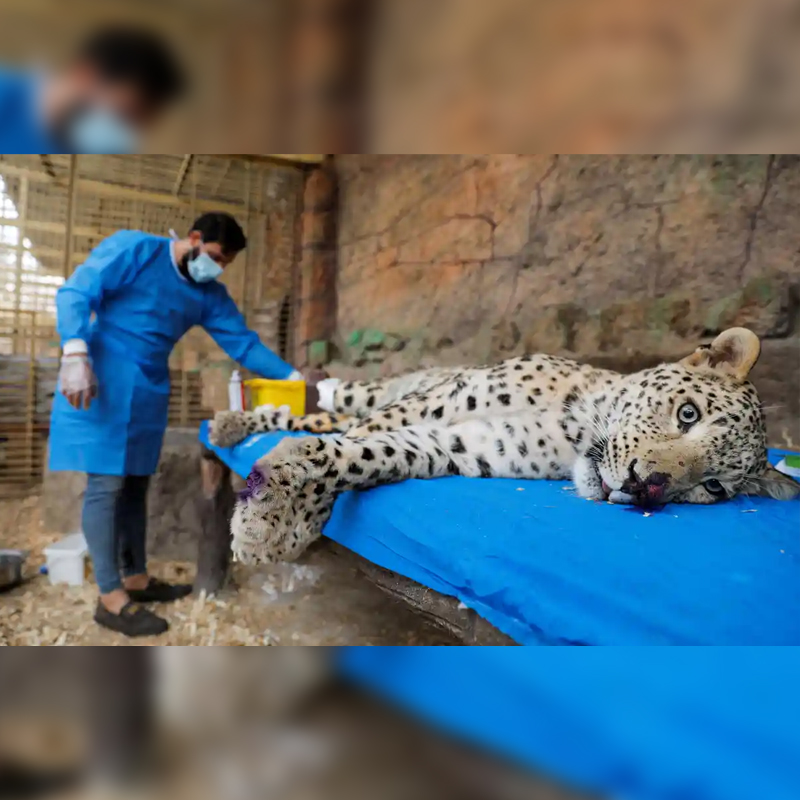
A member of the veterinary team tends to the leopard at a zoo in Duhok, Iraq. Photograph: Khalid Al-Mousily/Reuters
Featured image: Leopard by Pfüderi via Pixabay with screenshot via Facebook/ Kurdistan24


